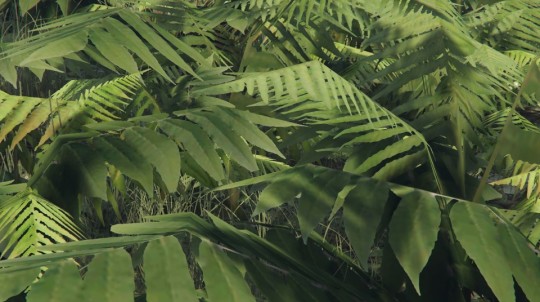#polypodiopsida
Text
None of you thought it might be important to tell me that ferns have sperm that swim???
So.
None of you thought it might be important to tell me that ferns have sperm that swim??? I just had to find all this out on my own?

And, (apparently, & no one thought to bring this up either🙄) fern plants are only one form… they have this 'other form' (tiny, ephemeral, difficult to find in the wild) alternates generations-- Fern spores don't grow into ferns! (WHAT) they grow into 'gemetophytes' (WHAT) THEN you get a fern.
Feel like I've uncovered a massive scandal.
#plants#biology#reproduction#ferns#spores#gemetophytes#sporophyte#learning#meiosis#Polypodiopsida#Polypodiophyta#vascular plants#land plants#gametes#seeds#zygote#reproductive cycle
61 notes
·
View notes
Photo
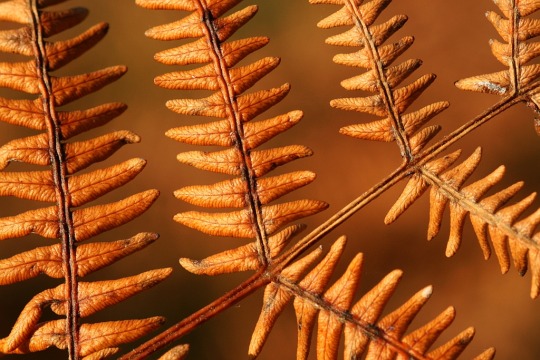
Bracken by nutmeg66 on Flickr.
This work is licensed under CC BY-NC-ND 2.0.
#bracken#fern#ferns#plants#plant blog#plant photography#creative commons#creativecommonsplants#curators on tumblr#landscape#wild#foliage#brown#flickr#Polypodiophyta#Polypodiopsida
21 notes
·
View notes
Photo

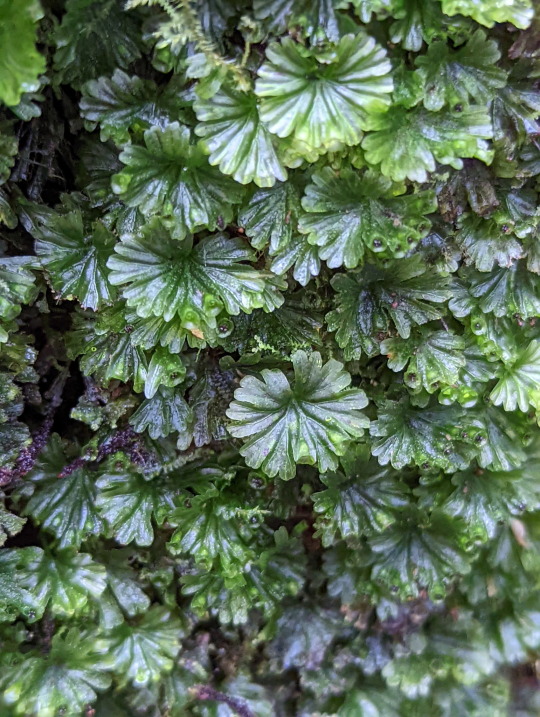


Filmy Fern
Very peculiar looking fern.
Crepidomanes saxifragoides
06/07/22
#Crepidomanes saxifragoides#plants#plantae#Polypodiopsida#Ferns#Tracheophyta#Filmy Ferns#Vascular Plants#Small Filmy Fern
35 notes
·
View notes
Text

House Plants: Ferns
And the thoughts that are blown with the scent of the fern
Are as new and as old as the world.
#Sam Walter Foss#ferns#Fern#Boston fern#Asparagus fern#Polypodiopsida#maidenhair fern#Bird's nest fern#Rabbit's foot fern#indoor plants#indoor garden#house plants#House plant#houseplants#plantblr#Plant life#plant lover#plantlover#plants#gardening#plant aesthetic#plant moodboard#plant life#plant posting#nature aesthetic#nature#nature moodboard#moodboard#aesthetic
3 notes
·
View notes
Photo
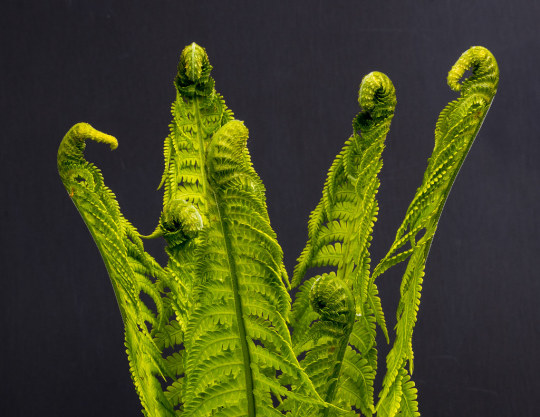
Meeting by NiBe60 https://flic.kr/p/2oyjGkh
6 notes
·
View notes
Text


5/12/22
4 notes
·
View notes
Text

Dicksonia antarctica
20-JAN-2023
Melbourne, Vic
#australia#victoria#melbourne#australian natives#native flora#fern#tree fern#soft tree fern#man fern#tracheophytes#polypodiophyta#polypodiopsida#cyatheales#dicksoniaceae#dicksonia#dicksonia antarctica#fern frond
0 notes
Text
Azolla filiculoides, Duckweed fern
Azolla filiculoides, Duckweed fern
Azollaceae/Salvinaceae
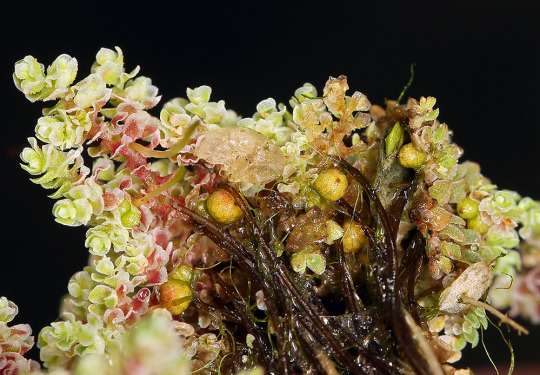

KEY
Aquatic plant with no flowers or bulbs, sporangia present
Plant body various, leaves various, plant free-floating, emergent, or submersed
Plant raft-like, free-floating on water surface or stranded along shore or in drying bottom sediments, breaking apart into individuals or small clumps
Plant body differentiated into a short, often branched stem with small, minutely velvety-papillate, scale-like leaves
Leaves 0.5–1.5 mm, alternate [each with a thick green or ± red-tinged floating lobe and a thin, colorless submersed lobe]; upper surface of floating lobe papillate or with short, inconspicuous hairs [Azollaceae]
Stems forming round to elongate plants to 3 cm, 2 cm wide; leaves ovate or oblong-ovate, generally 1.2–2 mm, 1 mm wide; leaf margins of upper (± green or ± red) leaf lobes with broad ± white band of cells >= 4 cells wide; male spore mass barbs lacking partitions
DESCRIPTION
Annual Fern, California Native, usually found in ponds and slow streams. Small free floating fern on mud/water roots. Green to +- red. with white margins ,round to elongate plants to 3 cm, 2 cm wide.
Roots Rhizome: roots hang in water, form dense clump
Stem: fork, pinnate thread like, generally 1--3 cm: immature prostrate, internodes < 5 mm;
Leaf: small overlapping scale like leaves cover stem, leaf has sublte papillae, green-red
Sporangium Case: clear yellowish orb, female with distinct equatorial girdle, wall tubercled and pitted. male spores mass barbs lacking partition
Fun facts: Used as green manure in rice paddies because of nitrogen-fixing algae (cyanobacterium Ananbaena Azollae) in upper leaf lobe. Made fossil fuels and can double it mass in 3 day
SOURCES AND MORE INFORMATION
Jepson eflora Azolla filiculoides
Integrated Taxonomic Information System - Report
Calscape Mosquito Fern
Wildflower Search
Youtube of Azolla filiculoides
#california native plants#ca native#annual fern#Azolla filiculoides#duckweed fern#azollaceaea#mother of fossil fuels#nitrogen fixing#pacific azolla#pacific mosquito fern#azolla#azollaceae#salviniales#polypodiopsida#tracheophyta#plantae#plants#scv native
1 note
·
View note
Text
the harveston sledathon event: jade leech's "incantation"
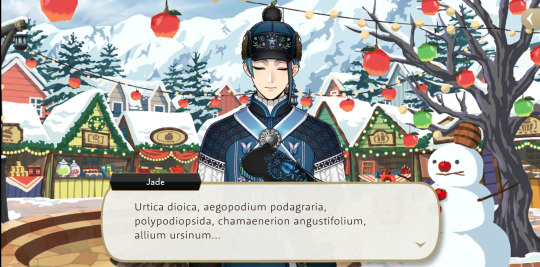

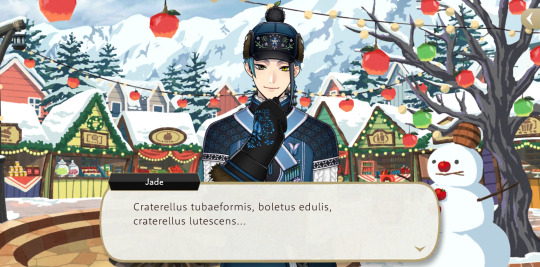
i'm not sure if everyone has gotten to this part in the new english server event yet, but this part when they were at the market got me curious. so, in typical me fashion, i committed a day of research to figure out what the hell jade was talking about.
first i would like to say that this was put together with A DAYS WORTH OF RESEARCH so if you know more about these plants/mushrooms and would like to add information or correct me please do so in the replies!! i'm not an expert by any means LMAO
with that said, onto the first plant!! i will list the scientific name that jade uses first and then the common name in parentheses. each plant/mushroom will have a picture after the short description for reference!!
i got all these images from google obv
~~~~~
Urtica dioica (Stinging Nettle) - A perennial herb that grows best in moist areas. Grows in late fall to early spring. Fall sun, partial shade. Used as an herbal remedy for sore muscles and seasonal allergies.

Aegopodium podagraria (Ground Elder) - Marked as an invasive species in some of the eastern states of the US (Pennsylvania, Connecticut, New Jersey, Vermont, Michigan, and Wiscousin.) Thrives in moist soil and grows during the summer. It’s commonly used in soup and as a remedy for gouts.

Polypodiopsida (Ferns!!!) - Thrives in moist soil and grows near rivers and creeks. Grows in shady locations in early spring. They reproduce with spores. Fiddlehead ferns are the curled up fronds of a young fern that can be cooked and eaten in various ways (steamed, fried & stored, roasted, pickled, etc.) They can also be used as fertilizer and for landscaping.
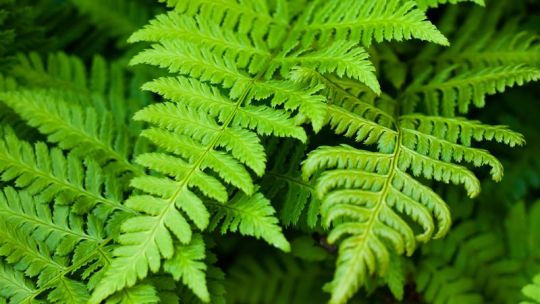
Chamaenerion angustifolium (Fireweed) - A perennial herb that flowers in June to September. Grows in full sun to partial shade and moist, well drained soil. Its primary use is medicine but it’s also used in tea, which in turn can be used to treat migraines, infections, and colds. Young fireweed shoots can be cooked and eaten (apparently, they taste like asparagus and should be cooked like them, too.)
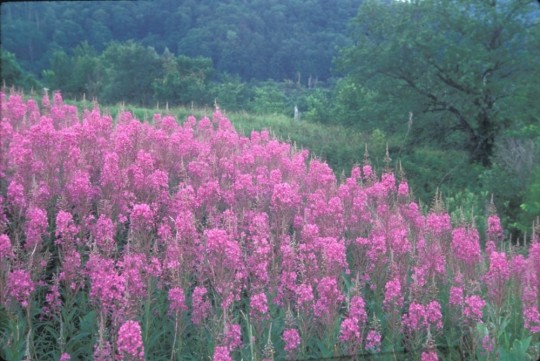
Allium ursinum (Wild Garlic or Cowleek) - Thrives in slightly acidic soil & moist conditions. Prefers shady conditions and grows around winter to spring, with a peak season of February to April. You can eat basically the whole plant, but if you eat the bulb the plant obviously won’t grow back. It’s been used as a medical plant and in cooking.
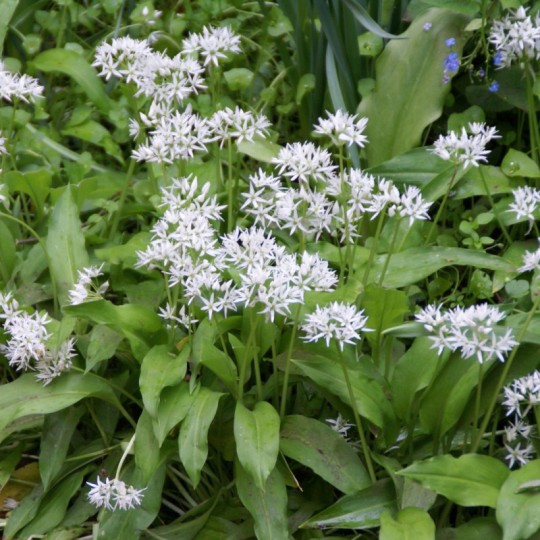
Sorbus (Mountain Ash or Rowan) - A bush that produces edible berries in late summer into early fall, and they stay on the tree into winter. The berries should not be eaten raw, but should be cooked because they contain parasorbic acid. The cooking process converts the parasorbic acid into a preservative sorbic acid. Their astringent taste is made sweeter by the frost. They grow best in full sun to partial shade and moist, well drained soil. They usually grow up to 15 meters tall.

Plantago major (Broadleaf Plantain) - A perennial herb that grows in late spring to summer (and sometimes in autumn.) They prefer moist soil but are very adaptable. Grows in moderate shade to full sun. The entire plant is edible, but apparently the flower shoots are especially delicious. They naturally grow in very dense populations and are easy to harvest. Works as a medicinal herb to treat inflammation and boost the immune system.

Equisetum arvense (Field horsetail) - Another perennial herb that grows from summer to the first frost. Grows in moist soil with full to partial sun. Can be used in tea and benefits the urinary system. Their root systems can grow as deep as six feet.

Craterellus tubaeformis (Winter mushroom, or funnel chanterelle) - Our first mushroom!! They are featured in a lot of recipes and are fairly common. They’re ready to harvest in mid-winter to mid-spring. They can be found in mossy areas with well decayed wood, and grow in loose clusters. They apparently have an earthy/fruity taste, and should be cooked so they don’t taste unbearably peppery.

Boletus edulis (Penny Bun) - Another mushroom with a dark brown cap. Spores grow more mushrooms in summer and autumn. Thrives in moist soil and can be harvested a few days after summer rain. They’re around 25cm tall on average and can weigh a kilo (which made me yell out loud, mind you. That's a big mushroom!!) They have a slightly nutty flavor.

Craterellus lutescens (Yellow Foot) - The last item on this list is another mushroom. It thrives in moist soil and they grow from 2-7 cm in length. They apparently have a peppery flavor when raw, but taste earthy when cooked. They typically grow around moss in loose clusters. They’re pretty similar to the craterellus tubaeformis, as one would expect from their shared genus, “craterellus.”

~~~~~
Overall Plant Conditions (AKA patterns I noticed while researching):
Practically all of these plants love moist & well drained soil. A lot of these plants grow in the summertime and like full/partial sun, but there’s a few exceptions of course. There’s a lot of herbs and perennial greenery that have medicinal properties. Many plants on this list grow well in disturbed soil or near water and roadways. All of them are edible (but beware of dangerous lookalikes!)
anyways < jade leech 3 i hope you found this somewhat interesting because i sure did!! (which is why i spent all my free time today researching it sigh the things i do for mermen)
#auburn's rambles <3#gonna make that a tag#jade leech#twst jade leech#disney twisted wonderland#twisted wonderland#disney twst#the harveston sledathon#auburn's fungi time <3
180 notes
·
View notes
Note
Euktis, what's your favorite plant?

"Mimosa pudica. I also like various types of Polypodiopsida. Polypodiopsida are often strong allergens, but they don't bother me much. One of the few saving fucking graces about my shit-ass body. I'm allergic to basically everything else...
Anyways, my favorite plants aren't usually edible. Or, at least, not usually grown in the home for food-related reasons. They're mostly aesthetic. People usually find that surprising, given my job."
6 notes
·
View notes
Text
𝟏𝟓 𝐌𝐔𝐒𝐄 𝐀𝐒𝐒𝐎𝐂𝐈𝐀𝐓𝐈𝐎𝐍𝐒
ANIMAL : Lamb
COLOR(S) : Forest green, navy blue
MONTH : April ( rainy days & storms )
SONG(S) : Birch Tree - Foals, Amsterdam - Nothing but Thieves, Blue Lips - Regina Spektor, Lose the Feeling - Sundara Karma
NUMBER : 20
DAY OR NIGHT : Dusk
PLANT(S) : Polypodiopsida
SMELL(S) : The earthy scent before a storm, Lord of Misrule by LUSH
GEMSTONE : Jade
SEASON : Autumn
PLACE(S) : Amsterdam, Netherlands, Lousiana
FOOD(S) : Mac & Cheese, Fries, Kroketten
ASTROLOGICAL SIGN : Pisces
ELEMENT(S) : Earth ( harmony, ambition, responsibility )
DRINK(S) : Long Island Iced Tea, Diet Cola

TAGGED BY : my dearest @cultleads
TAGGING : anyone who wants to do it!
1 note
·
View note
Photo

Fern by TANAKA Juuyoh (田中十洋) on Flickr.
This work is licensed under CC BY 2.0.
#fern#ferns#plants#plant blog#plant photography#creative commons#creativecommonsplants#curators on tumblr#green#foliage#landscape#cultivated#flickr#Polypodiophyta#Polypodiopsida
11 notes
·
View notes
Photo


Two leaf roller cocoons.
This is how these caterpillars stay safe ❤
Tortricidae
Both found on Polypodiopsida plants
18/05/22
#Tortricidae#Polypodiopsida#ferns#Tortricoidea#Lepidoptera#leaf rollers#cocoons#structures#Unidentified#bugblr#bugs#insects#insecta#insectblr#insects tw#bug#bugs tw#Arthropods#Arthropoda#nature#nature photography
196 notes
·
View notes
Video
Fern or Bracken by Tony
Via Flickr:
This one is Fern: The pinnate is the feather-like leafy bit that comes out of the stem. Ferns are bi-pinnate, which means that the leaflets divide twice to produce the easily recognised fronds. Bracken, on the other hand, is tri-pinnate. This means that the leaflets divide three times, giving each frond its own tiny frondlets – like a little green comb.
#Scotland#britain#cannich#europe#highlands#invernesshire#2020 09 16 111204#©2020 Tony Sherratt#plant#fern#Polypodiopsida#green#frond
6 notes
·
View notes
Text

6/1/22
2 notes
·
View notes

